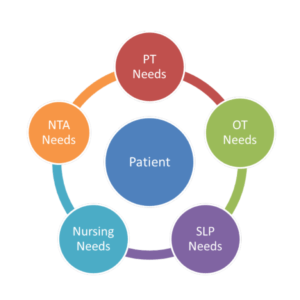Dementia-related LTSS: Report offers policy blueprint
Policymakers must find ways to improve long-term services and supports (LTSS) for the increasing number of people who have dementia as well as for their caregivers, maintains a new study from the nonprofit research organization RAND Corp. The authors suggest a national blueprint to bolster dementia caregiving, including changes for residential care and the direct-care workforce.
“Improving Dementia Long-Term Care: A Policy Blueprint” builds on earlier work and was written following interviews with representatives of national, state and local stakeholder groups. Their views, combined with research on existing policy plans, were analyzed to rank possible policy options to identify those with the greatest impact on improving dementia long-term care.
“A recent study by RAND found that the majority of Americans' cost burden for dementia is caused by long-term care,” says Regina A. Shih, PhD, the study's lead author and a senior behavioral scientist at RAND. “As baby boomers reach the ages of highest dementia risk, the nation faces urgency in finding ways to improve [LTSS] specifically for this condition. This issue is critical for families and loved ones, who provide the bulk of dementia care.”
The annual costs of dementia care total $159 billion to $215 billion, estimate RAND researchers, and it could more than double by 2040 if the age-specific prevalence rate of the disease remains constant as the nation's population grows older. U.S. policymakers have made funding for clinical responses to dementia a priority, the authors say.
Five objectives
The study recommends that 25 “high-impact policy options” be considered for adoption immediately. The suggestions have five objectives:
- Increase public awareness of dementia, to reduce stigma and promote earlier detection.
- Improve access to and use of LTSS for people with dementia.
- Promote high-quality care focused on meeting the needs of individuals and family caregivers.
- Provide better support for family members who provide care to people with dementia.
- Reduce the financial burden placed on individuals and families who must pay for LTSS for people with dementia.
Meeting the objectives, the authors say, will require effort across multiple sectors and by numerous stakeholders, including groups that provide care or purchase care, as well as researchers and policymakers. Ways to accomplish objective #2, the authors say, include establishing new and expanding existing home- and community-based services (HCBS), creating new and improving existing incentives for the direct-care workforce, expanding nurse delegation laws in all states, and refining Medicare post-acute care and hospice benefits. Ways to accomplish objective #3, they add, include establishing “Centers of Excellence” models for dementia residential care through the end of life; minimizing transitions and improving coordination of care across providers, settings and stages of dementia; and expanding financial incentives for bundled institutional services and HCBS.
RAND researchers found that one of the first steps to help individuals plan for long-term care needs is to increase detection and diagnosis of dementia through better outreach to the public and wider use of cognitive assessment tools by providers. Researchers also highlighted the importance of promoting high quality, long-term care by centering care around individuals and family caregivers. This goal can be accomplished by identifying them jointly during care and improving coordination of care across different settings, including nursing homes, hospices, hospitals, emergency departments and the home, they say.
Direct care workers
The direct care workers (nursing aides, home health aides and personal or home care aides) who provide most formal care for those with dementia, the report notes, need improved training in how to manage behavioral symptoms related to dementia. Such training would improve quality of life and quality of care for those with dementia as well as reduce abuse and neglect in nursing homes, the authors add.
The federal and state governments also must establish or improve existing certification requirements for paraprofessional workers, the report maintains. The federal government, for instance, requires less than two weeks of training for such caregivers, the authors say. Certification efforts could improve care quality while reducing staff turnover for long-term care providers, they add.
I Advance Senior Care is the industry-leading source for practical, in-depth, business-building, and resident care information for owners, executives, administrators, and directors of nursing at assisted living communities, skilled nursing facilities, post-acute facilities, and continuing care retirement communities. The I Advance Senior Care editorial team and industry experts provide market analysis, strategic direction, policy commentary, clinical best-practices, business management, and technology breakthroughs.
I Advance Senior Care is part of the Institute for the Advancement of Senior Care and published by Plain-English Health Care.
Related Articles
Topics: Executive Leadership , Medicare/Medicaid









